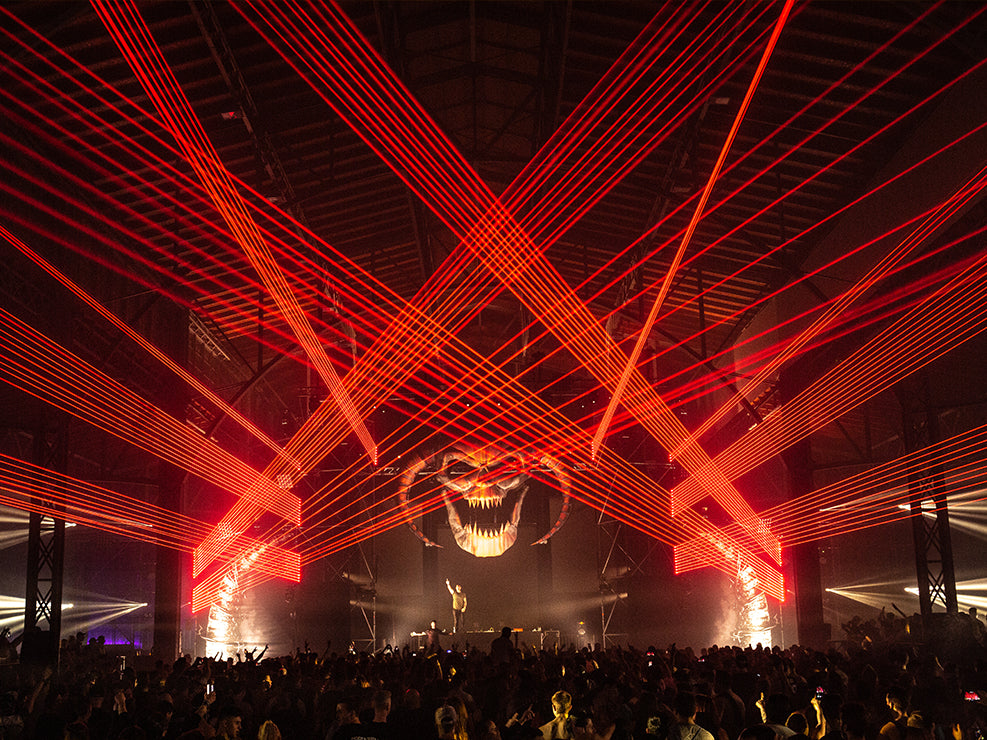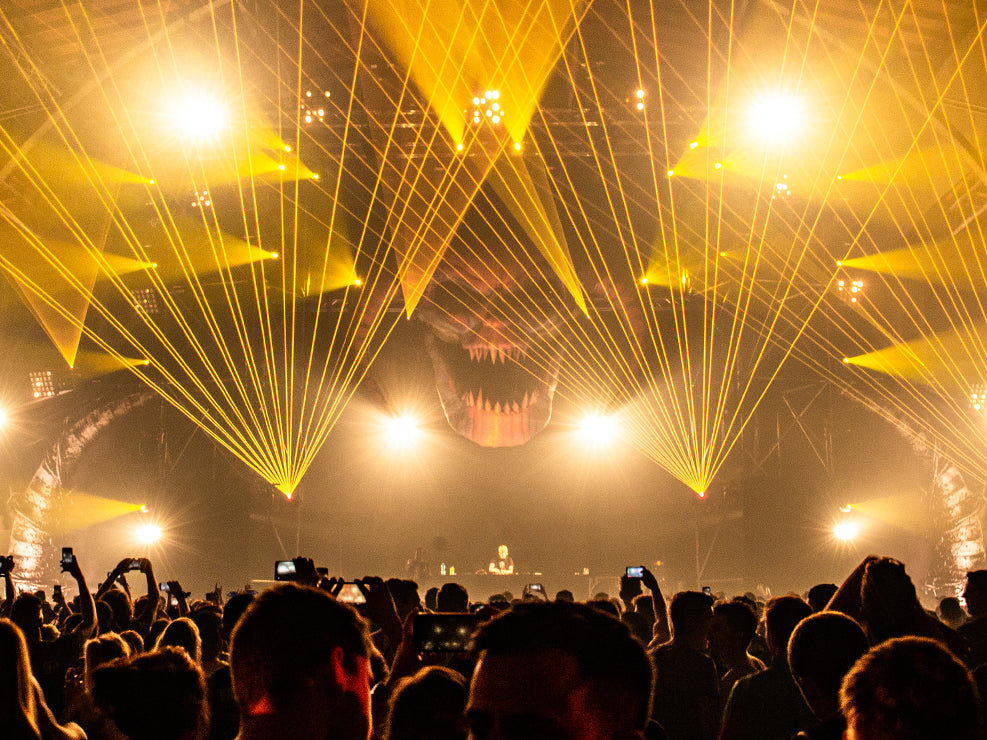Laser Stage Lighting
Stage Lighting
Stage lighting involves manipulating the qualities of light to influence and integrate the spectators to the actions being performed on the stage for bands, in theatre, at festivals and lately even in churches. This is done by carefully controlling the intensity, colour, direction, and movement of light.
In the past, stage lighting was mostly used for theatrical and musical performances, where the main purpose in these applications was lighting and selective focusing.
With the advent of Lasers and other modern stage lighting elements, stage lighting is now being used to add liveliness to events with some cool lighting effects including dazzling laser scanning effects in the package. In fact, laser stage lighting is now a type of fun event on its own, very portable and widely available for hire.

Red laser bars in action on stage
Laser light is useful in entertainment because the coherent nature of laser light allows a narrow beam of light to be produced, which allows the use of optical scanning to draw patterns or images on walls, ceilings or other surfaces including theatrical smoke and fog without refocusing for the differences in distance, as is common with video projections. This inherently more focused beam is also extremely visible and is often used as an effect on its own. Sometimes the beams are "bounced" to different positions with mirrors to create some amazing geometrical shapes or laser sculpture designs.
Most times, lasers are used in conjunction with other sources of lights like LED lights. LED lights allow for more control over the strength and temperature. The LED light can be arranged in different ways to create different effects. LED lighting lasts longer than traditional bulb-type lights, provide more colour options and make it easier to switch between colours and flashing effects. LED lighting effects and lasers can be also joined together into something called Laser LED bars - a usual laser bar with added LED blinder effect.
Stage Lighting control via DMX and ArtNET
Historically, this has been done by the use of intensity control, which is now relatively simple due to the advancement in technology. Solid-state dimmers are controlled by one or more lighting controllers.
Controllers are lighting consoles designed for sophisticated control over very large numbers of dimmers or luminaries but maybe also simpler devices which playback stored sequences of lighting states with minimal user interfaces. Consoles are also referred to as lighting desks or light-boards. The lighting control is transferred with the aid of an instrument called DMX.
DMX - digital multiplex, is a communications protocol used in consoles, dimmers, and computerised lighting equipment, in which signals are encoded digitally and all signals are sent in sequence through a single pair of wires or remotely. This control method allows the dimmers which are bulky, hot and sometimes noisy, to be positioned away from the stage and audience and allowing automated luminaires to be positioned wherever necessary. For larger shows or installations, multiple consoles are sometimes used together and in some cases, lighting controllers are combined or coordinated with controllers for sound, automated scenery, pyrotechnics and other effects, including laser stage lighting, to provide total automation of the entire show.
Also, the latest Kvant lasers can be controlled directly from a lighting console using native laser control over DMX and Artnet.

Lighting fixtures allow for easy movement and direction of the rays of light. Special laser shows are created by a programmed sequence of movement of the beams. There are also automatic fixtures in which the movements are done by rotors and motors built into the system. The automatic fixtures work in two ways; Moving head and Moving method. In Moving head, also called Moving yoke, the unit works by moving the entire fixture body, while in the moving mirror method, as the name implies, the fixture body is stationary and the light is reflected by a mirror, which redirects the light by panning and tilting - very similar to laser beam scanning.
Laser stage lighting is now being widely used in theatre to complement the emotion and mood contained in performance. Laser lightning has also found its application in musical concerts, where they are used for lighting bands during band performances to create stunning laser light effects. Also, in large gatherings where the stage is far from the audience such as large churches, Laser stage lighting is the best option as it can be clearly seen from afar. Outdoor events are also often using lasers to provide the amazement for their audiences.
Nowadays, laser lighting has become one of the core aspects of major events and shows. Stage performances have grown in size and popularity, and stage laser lighting has become one of the most important components of such shows. If you think Laser stage lighting is the next best thing for your events, but you do not want to break your budget, Kvant laser stage lighting equipment is also available for hire.




